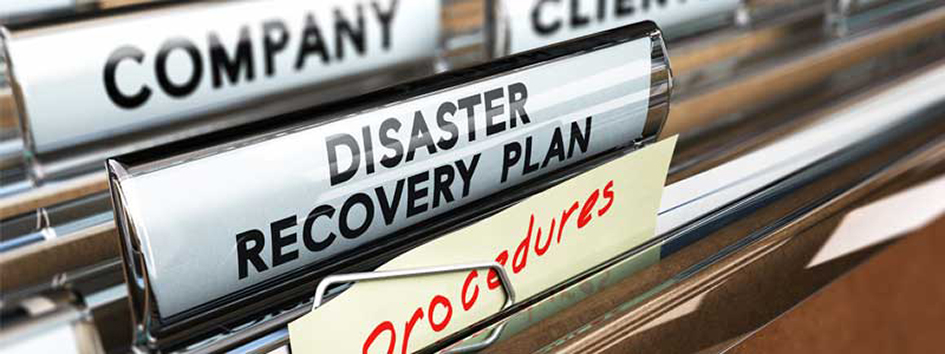What would happen to your business if you lost a server, had a hard drive failure or lost/broke a laptop, tablet or mobile phone?
Would your business be able to pick things up and continue to operate the business?
For those with a Disaster Recovery Plan, probably yes, and for those without one, possibly but with more difficulty than those businesses that do have a plan.
So what is Disaster Recovery (DR)? It is the process of planning and implementation to ensure the business systems operate in the event of some form of disruption to those systems. As opposed to Business Continuity, DR focusses on systems, rather than people and processes
Disaster Recovery (DR) is the process of planning to ensure the business can operate with minimal disruption should a significant event occurs that affects systems.
The importance of planning around DR is as important as any other planning the business undertakes and the advantage of capturing this plan is the process itself to ensure all aspects of the business are captured
So in order to prepare and plan one of the first things to do is to work out what your RPO (recovery point objective) and RTO (recovery time objective) are. RPO is the point in time when you recover your data. For example, are you ok with losing all data created in the last month? The last week? The last 24 hours?
RTO is the maximum time you will tolerate an IT system, network or application to be unavailable. For example, can your organisation function without email for an hour? A day? A week?
Once you have decided the RPOs and RTOs for critical IT services and applications you should then check that your backup regime reflects that. If not then this is the weakness you will need to address through appropriate planning and shortfall management.
Incorporate telephony in as well, both mobile and fixed as this can be forgotten because we assume its not important or critical. Simply identifying what data is kept on devices may lead to a policy around employees back ups on devices, (think photos and contacts).
With the proliferation of smartphones Im surprised at how often I see business owners with smartphones that are not backed up. Unfortunately I have also seen the reaction when they realise all their data is lost because the phone is either lost or unable to be restored.
I heard an instance where a sales manager held all the companies customer and prospect information on his iPhone, when he lost his phone he and the business lost all of that information simply because he didn’t back up the device.
Consideration for the type of event and different scenarios may also be worth while. In New Zealand we are fortunate to have a really robust electrical and telecommunication system with well over 99% reliability. This enables some confidence in the event of a major disaster like Christchurch that you can pick up business as long as you have access to the internet and power.
Some key learning from the Christchurch earthquake were the ability to get back up and running quickly. Consider normally about 11.4 % of businesses in Christchurch annually went out of business for one reason or another prior to the earthquakes. Since the earthquake, it’s been around 11.6%.
This demonstrates two things, firstly how resilient the business community was and secondly that the technology was available to continue business. Remarkable when you consider the main CBD was closed down and guarded by the military, with only authorised people allowed in immediately following the quake.
The individual success of businesses differed in part to how capable they were of picking the business up and operating somewhere else. For those with DR plans this was quicker than those without. But even today without a detailed DR plan it can be reasonably quick to at least get operational depending on how mission critical the data you don’t have is to the business.
Even though natural disasters tend to get the most attention, the three most common reason for data loss is
1. Human Error
2. Unexpected updates
3. Server Room/Hardware Environmental Issues
One of the key trends in Disaster Recovery is Disaster Recovery as a Service (DRaaS)
DRaaS is a cloud computing and backup service model that uses cloud resources to protect applications and data from disruption caused by disaster. It gives an organization a total system backup that allows for business continuity in the event of system failure.
There are some obvious advantages moving to a DRaaS model, you don’t need to worry going forward as the service provides the failure safe and testing functions that often don’t get done in businesses. And like most cloud based solutions you get the benefit of scale and cost efficiency not normally available to small and medium sized businesses.
It might be that your plan encompasses a number of solutions, from DRaaS, Cloud Back up, Virtualisation of servers or just employee policies. The key would be to ensure your plan is tested and tested regularly. Also consider whether a plan you did two years ago is still relevant.
Only you will know what the best fit for the business is. But the simple act of incorporating DR plan into your business planning is likely to save you time and revenue should you have to implement your plan due to a significant event.



